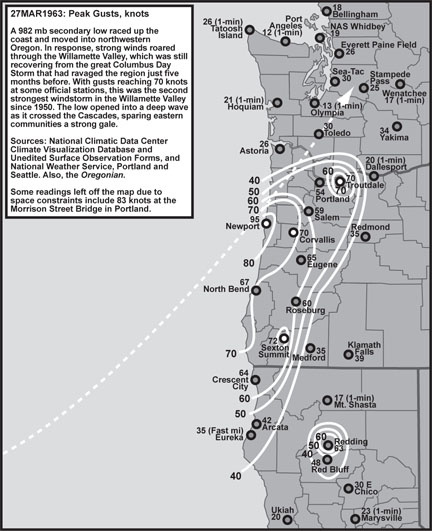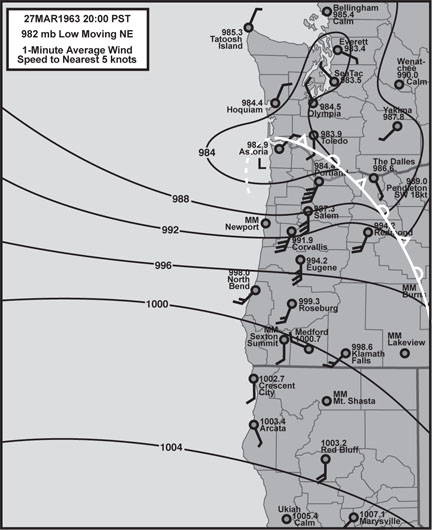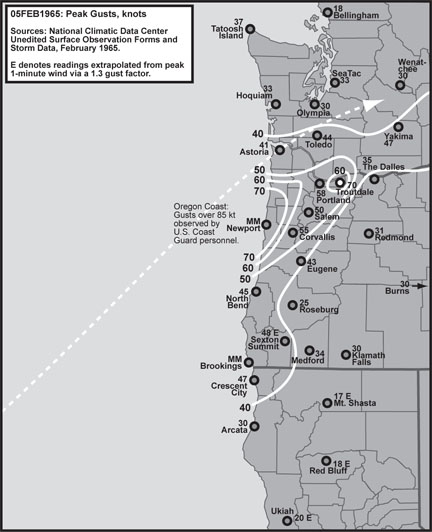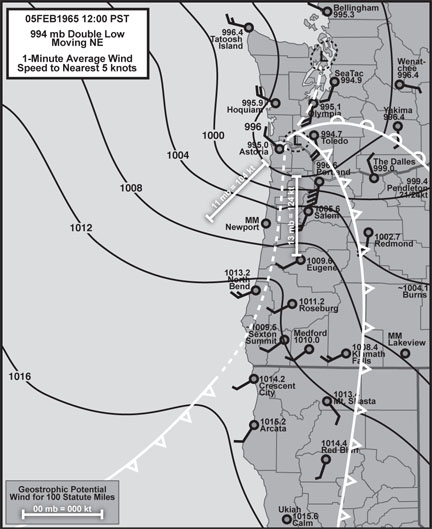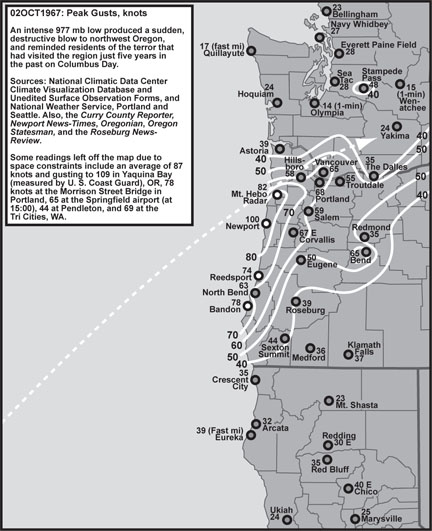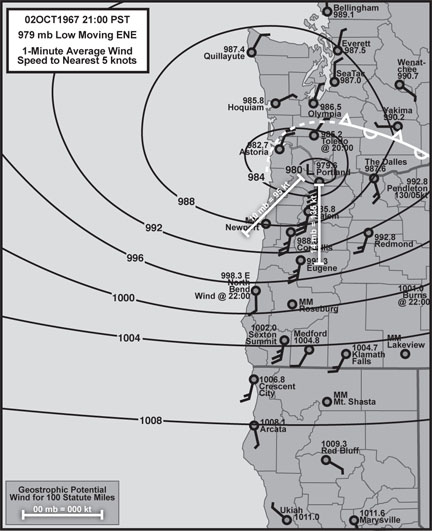04 Dec 1951
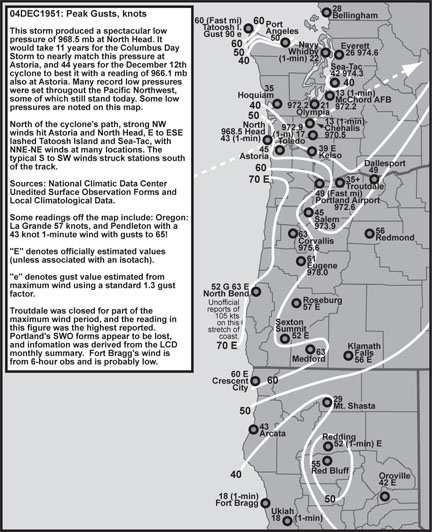
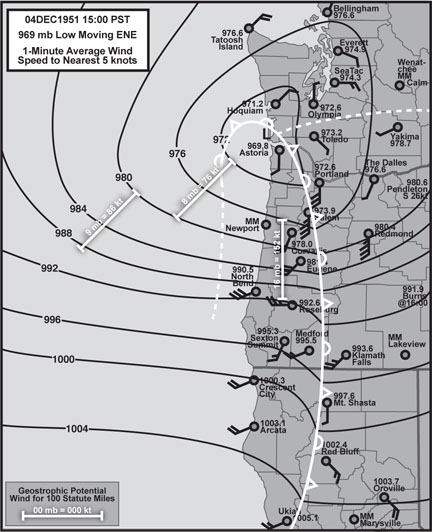
04 Dec 1951: This very deep 968 mb low moved right over Astoria and followed a ENE track into Washington. Record low pressures, if not all-time then for the month, were established in many areas of northwest Oregon and southwest Washington, including 968.5 mb at North Head, 970.5 mb at Chehalis and 972.6 mb at Portland. Pressure tendencies were quite strong with this event, especially in the pressure fall phase ahead of the low. Eugene showed an incredible drop of –6.1 mb/hr, and Portland –5.1 mb/hr: these values are on par with the Columbus Day storm. For the 1948-2004 time period, this 1951 cyclone produced the steepest Willamette Valley gradient, with a peak of +15.2 mb EUG-PDX. The measured geostrophic wind potential for the Valley, based on a +16 mb gradient over 100 statute miles at the time of the included surface map, was about 150 knots, implying the potential for 75-knot average winds near the surface. This potential was not realized, with 1-minute winds reaching 35 to 55 knots in the Valley, and 1-second gusts of 55 to 65 knots. Unofficially, gusts reached 105 knots on Oregon’s south coast. This storm was particularly damaging to timber in the Coast Range: At least 8 billion board feet of timber were toppled in Oregon in the largest windthrow event in about 40 years. For Oregon, this storm was perhaps the most powerful event of the 1950s, and was the "remembered storm" until the Columbus Day storm of 1962 claimed this status.
